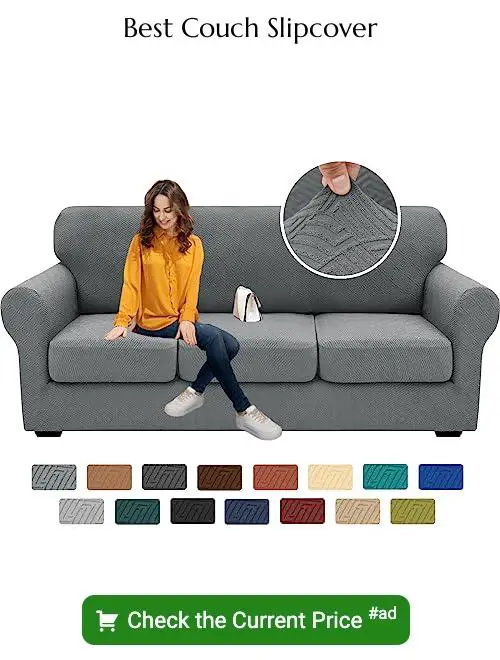Last updated on
Discover the simple steps to accurately measure your couch for a perfectly fitting cover, ensuring a stylish and well-protected piece of furniture.
Are you tired of looking at your old, worn-out couch but don’t want to spend a fortune on a new one? A couch cover can be the perfect solution! Not only does it give your furniture a fresh new look, but it also protects it from spills and stains. However, before you rush out to buy a cover, make sure you measure your couch correctly.
In this article, we’ll show you how to measure a couch for a cover so that you can find the perfect fit and transform your living room in no time!
Table of Contents
Tools Needed for Measurement
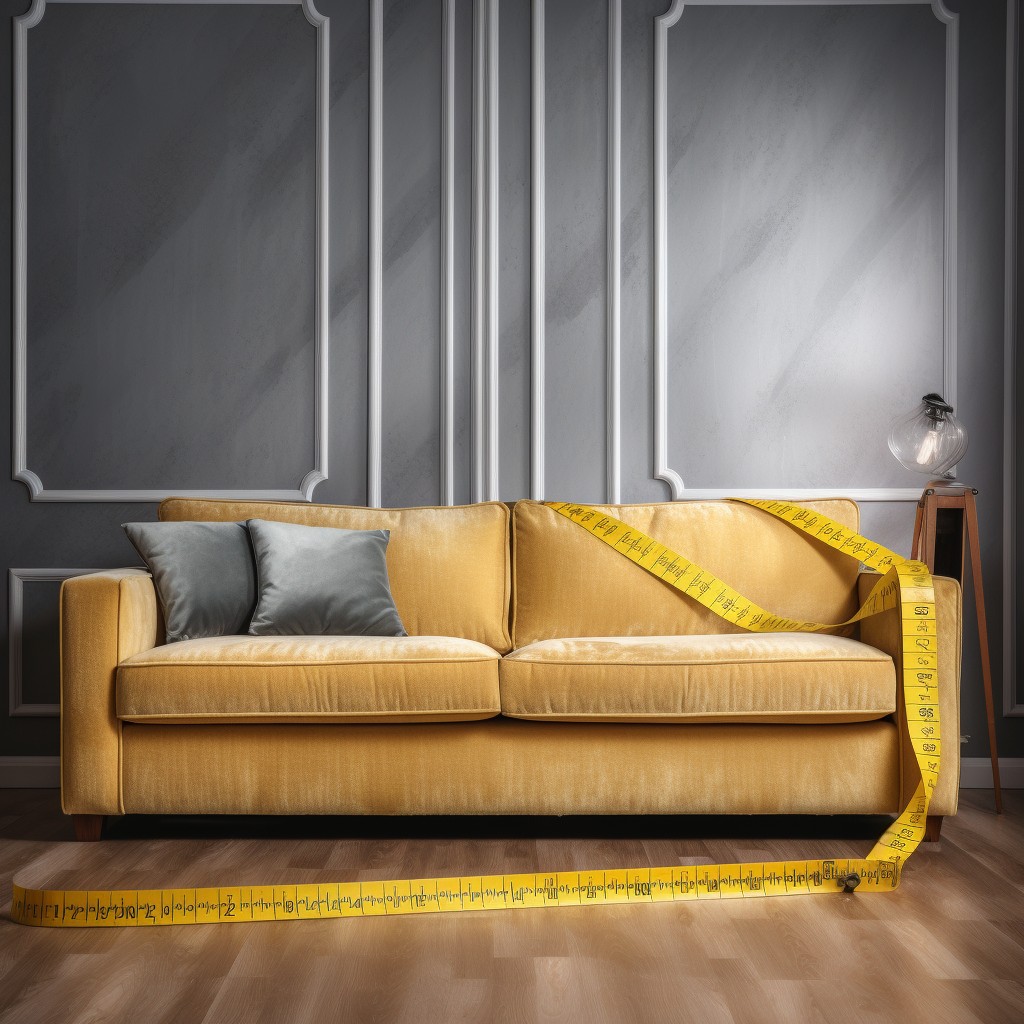
You’ll need a tape measure, preferably one that’s at least 10 feet long to ensure accurate measurements. A pen and paper will also come in handy for jotting down your measurements as you go along.
If possible, it’s best to have someone help you with the measuring process so that they can hold the tape measure steady while you take note of each measurement. If no one is available to assist, consider using a piece of string or ribbon instead of a tape measure – this way, it will be easier for you to keep track of where each measurement starts and ends.
Measuring Length of Couch
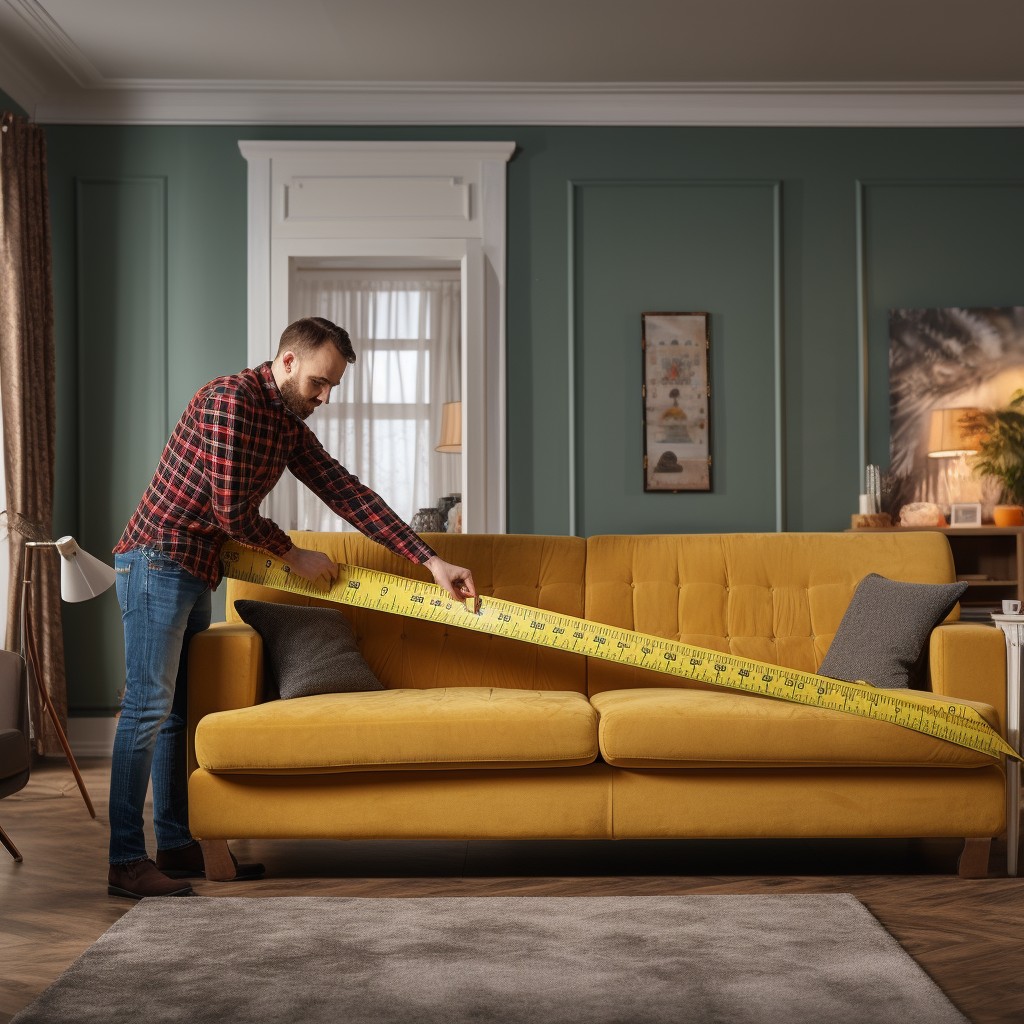
Start by placing one end of the measuring tape at the left side of your couch and extend it all the way to the right side. Make sure that you’re measuring from one outer edge to another, not just from cushion-to-cushion.
If your couch has arms, make sure that you include them in your measurement as well. Measure from where each arm meets with its corresponding backrest.
It’s important to take accurate measurements so that you can find a cover that fits snugly without being too tight or loose. If possible, have someone assist you in holding down any cushions while taking measurements for more precise results.
Measuring Width of Couch

To do this, you’ll need a measuring tape and someone to help you hold it steady. Start by placing one end of the tape measure at one armrest’s outer edge and stretch it across to the other side’s outer edge.
Make sure that you’re measuring from seam-to-seam rather than from inside cushion edges or piping.
If your couch has curved arms, make sure that you follow their shape as closely as possible while taking measurements for accuracy. If there are any protruding features like buttons or decorative elements on either side of your sofa, be mindful not to include them in your measurement.
Measuring Height of Couch
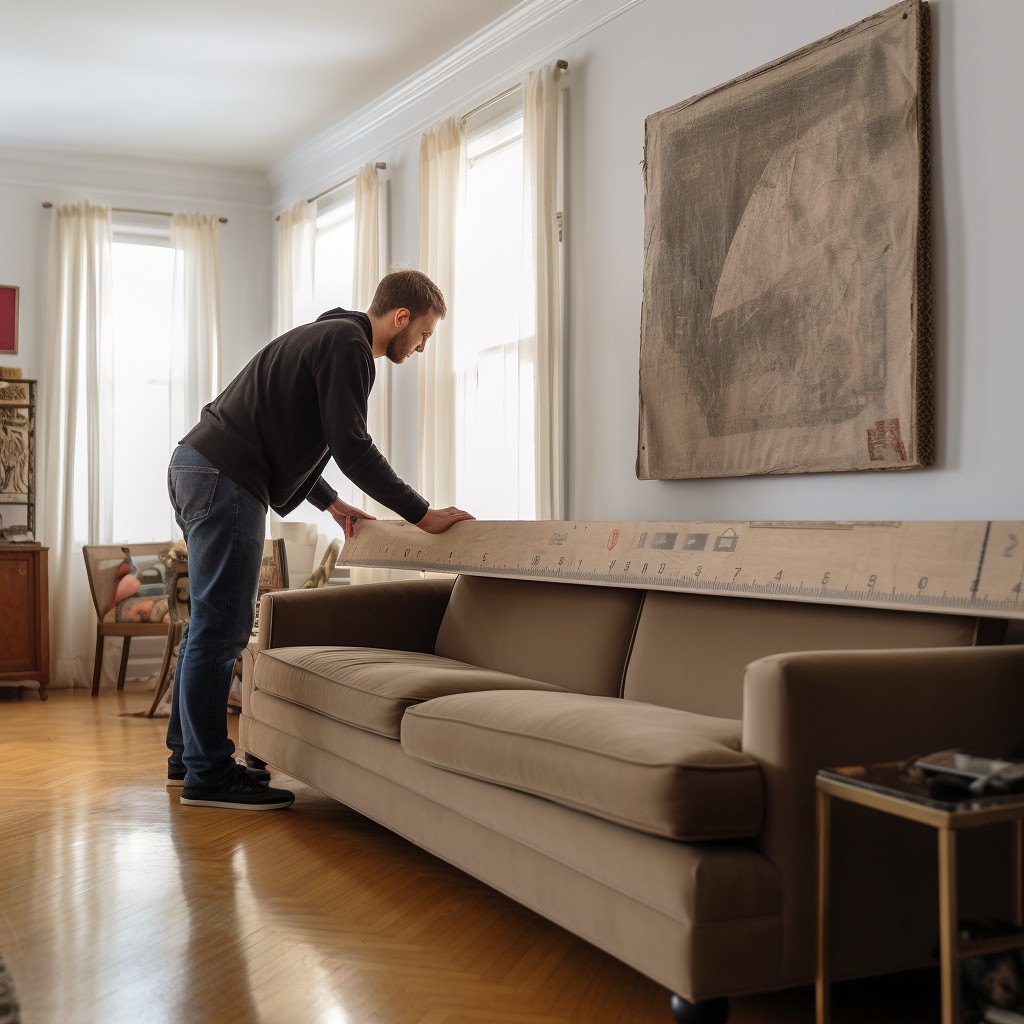
To do this, you’ll need to measure from the floor to the highest point on your couch’s backrest. This could be at the center or one of its sides if it has an asymmetrical design.
If you have removable cushions, make sure to remove them before taking measurements. If not, press down gently on any raised areas and take note of where they meet with other parts of the frame.
It’s important to remember that some covers may only fit certain heights due to their design or material stretchiness. So always double-check manufacturer specifications before making a purchase.
Measuring the Couch Diagonally

This measurement is especially crucial if you have an L-shaped or curved couch. To measure the diagonal length of your couch, place one end of your tape measure at the bottom corner of one side and extend it up and over to the opposite top corner.
Make sure that you’re measuring from point-to-point diagonally across any curves or angles in your furniture piece. This will give you an accurate measurement that takes into account all aspects of its shape.
Once you’ve taken this measurement, add it to those for width and height so that you can compare them with available covers’ dimensions accurately.
Assessing the Couch Shape
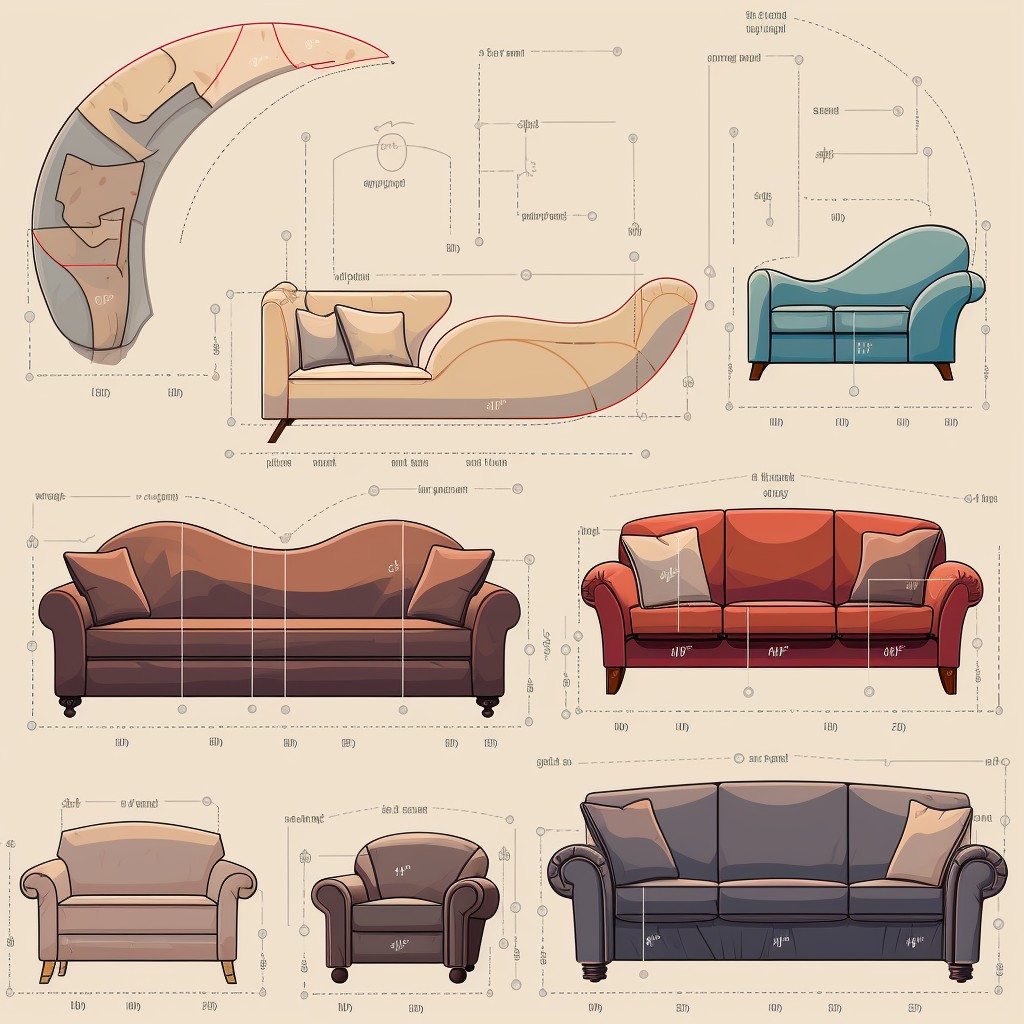
Couches come in different shapes such as L-shaped or curved. It is important to take note of these unique features when measuring for a cover.
For an L-shaped couch with a chaise lounge on one end, measure each section separately and add them together. If your couch has curves or angles that make it difficult to measure accurately with a tape measure alone, consider using string or rope instead.
It’s also essential to determine if your sofa has any irregularities like protruding arms or extra cushions that may affect the fit of the cover. Take note of these details before choosing a cover so you can find one that fits snugly over every part of your furniture piece.
Considering Extra Cushions

These can include throw pillows or seat cushions that are not permanently attached to the couch. To ensure a proper fit, measure these separately and add their dimensions to your overall measurements.
For example, if you have two large throw pillows on either end of your couch, measure each one individually and add their length and width measurements to the total length and width of the couch. This will give you an accurate measurement for purchasing a cover that fits snugly over all parts of your furniture.
By taking into account any additional cushions or accessories on your sofa when measuring for a cover, you’ll avoid buying one that is too small or doesn’t fit properly over all areas of the piece.
Measuring Armrests
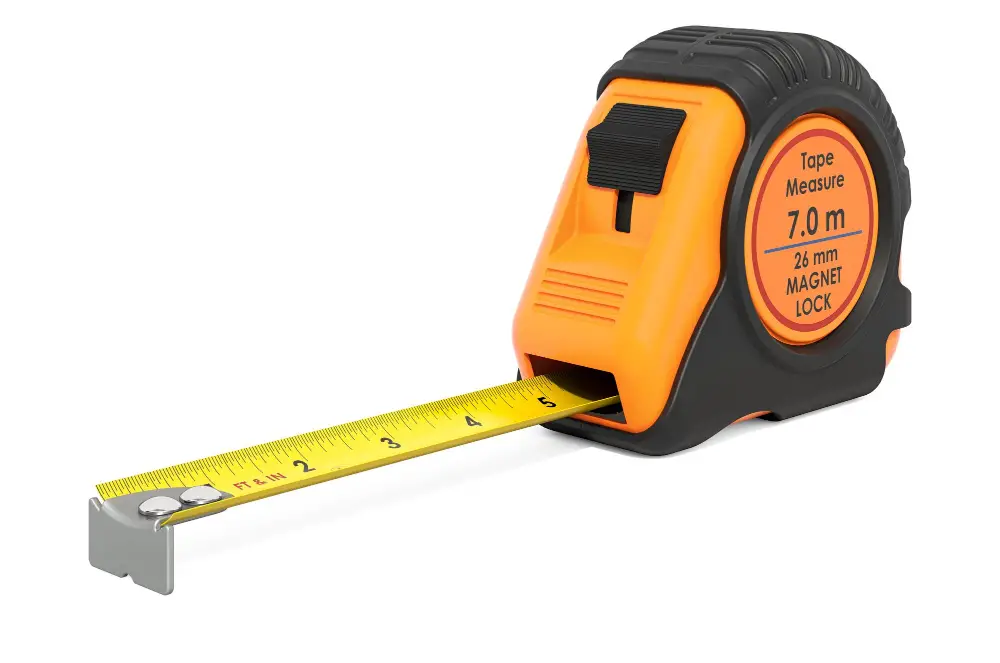
These can vary in size and shape depending on the style of your couch, so it’s essential to measure them accurately.
To measure the armrest width, start at one end of the arm and measure straight across to the other side. If there are any curves or angles in your armrest design, make sure you follow these contours when taking measurements.
For height measurement, place one end of a tape measure at the base of an upright section on top of an arm and extend it vertically upwards until you reach its highest point. Make sure that you’re measuring from where this part meets with another piece (such as back cushion) rather than just guessing based on what looks right visually!
Measuring Depth of Cushions

To measure cushion depth, remove any loose pillows or cushions from the couch and place a straight edge across the front of one cushion to its back. Measure from this line to where it meets with the backrest.
It’s important to note that some covers come with separate pieces for each cushion, while others are designed as one piece that fits over all cushions together. If you’re unsure which type of cover you need, be sure to check product descriptions carefully before making a purchase.
When measuring multiple seat cushions on a single sofa or loveseat, make sure they are measured individually as their depths may vary slightly.
Tips for Accurate Measurements
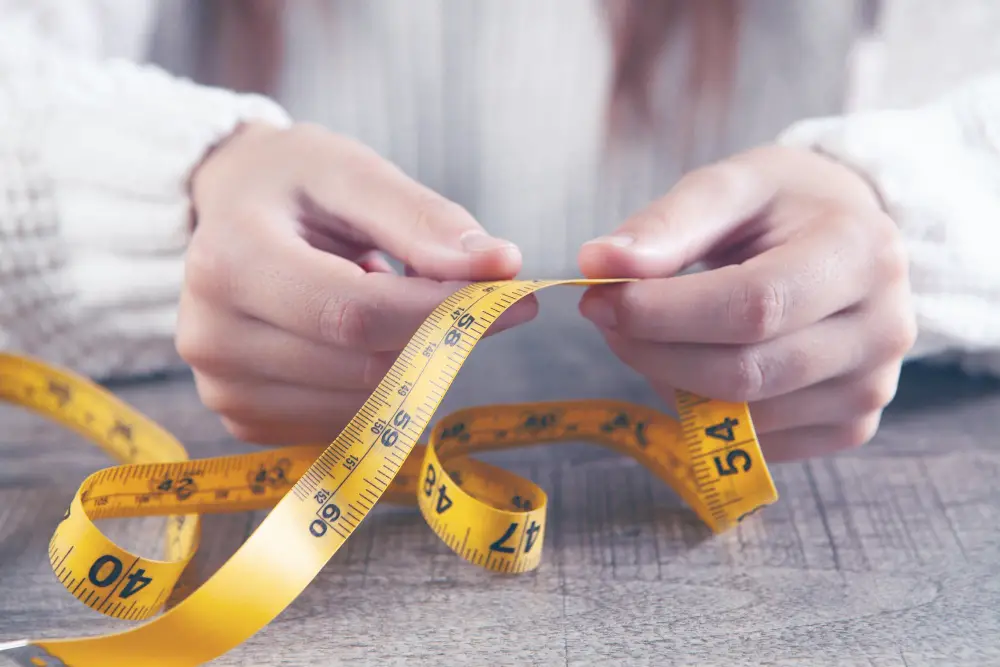
Here are some tips to help you measure your couch correctly:
1. Use a measuring tape: A flexible measuring tape is the best tool for taking precise measurements.
2. Measure twice: Double-check all of your measurements before making any purchases or cutting any fabric.
3. Take note of irregularities: If there are any unusual features on your couch, such as curved arms or an angled backrest, make sure to measure these areas carefully and note them down.
4. Don’t forget about cushions: If you have removable seat cushions, be sure to include their depth in your calculations so that they fit snugly under the cover.
5. Consider shrinkage and stretch: Keep in mind that some fabrics may shrink after washing while others may stretch over time with use; choose a material accordingly and factor this into account when taking measurements.
Comparing Measurements to Cover Options

When comparing your measurements to the available options, keep in mind that covers come in different sizes and shapes. Some are designed for specific types of furniture while others are more versatile.
It’s important to choose a cover that matches the shape and size of your couch as closely as possible. A too-small cover won’t fit properly, while an oversized one will look sloppy and may not provide adequate protection.
When browsing through different covers online or at a store, pay attention to their dimensions and compare them with yours carefully. Don’t forget about any extra cushions or armrests when making comparisons.
If you’re unsure which size is right for you or if there isn’t an exact match available on the market, consider getting custom-fit covers made specifically for your couch by professional upholsterers.
Choosing the Right Cover

There are many options available on the market, so it can be overwhelming to make a decision. One important factor is material – do you want something that’s easy to clean or more luxurious? Another consideration is style – do you prefer a solid color or patterned design? think about whether you want a stretchy cover that will conform tightly to your couch or if you’d rather opt for one with custom-fit dimensions.
It’s also essential to consider any extra features that may be important for your lifestyle and needs. For example, some covers come with straps and buckles which help keep them in place while others have pockets where remote controls can be stored.
Ultimately, choosing the right cover comes down to personal preference and practicality.
Stretch Vs. Custom-fit Covers
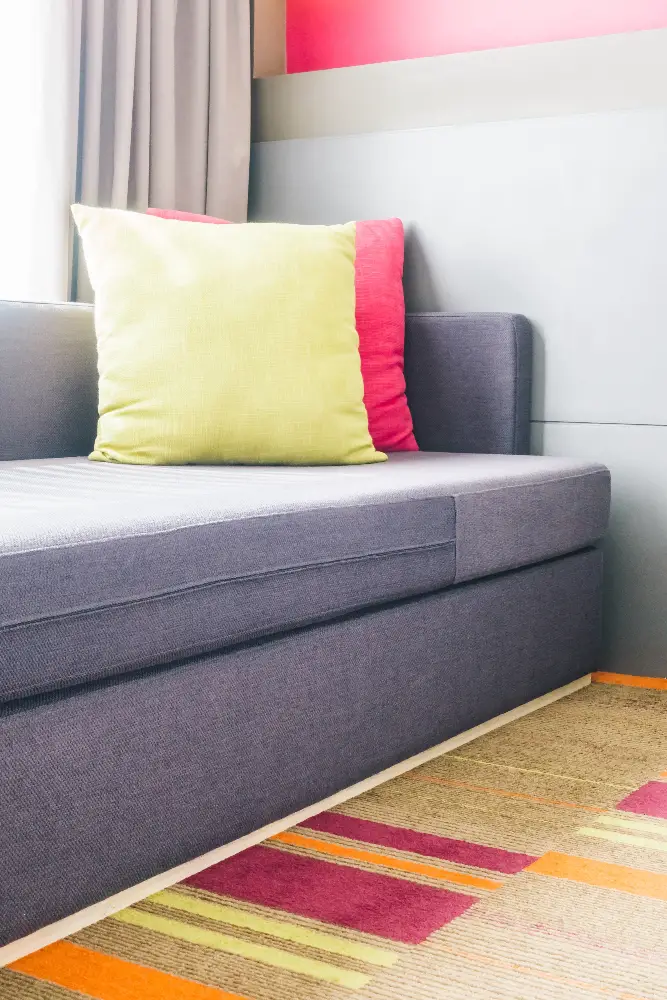
Stretch covers are designed to fit a range of couch sizes and shapes, thanks to their elastic material that stretches over the furniture. Custom-fit covers, on the other hand, are made specifically for your couch’s measurements.
Stretch covers can be more affordable than custom-fit ones and offer an easy solution for those who want a quick update without spending too much time or money. However, they may not provide as snug of a fit as custom options do.
Custom-fit covers tend to be pricier but offer superior coverage since they’re tailored precisely for your furniture’s dimensions. They also often come in higher-quality materials that last longer than stretchy fabrics.
Ultimately, whether you choose stretch or custom depends on your budget and preferences regarding style versus function.
Types of Couch Cover Materials
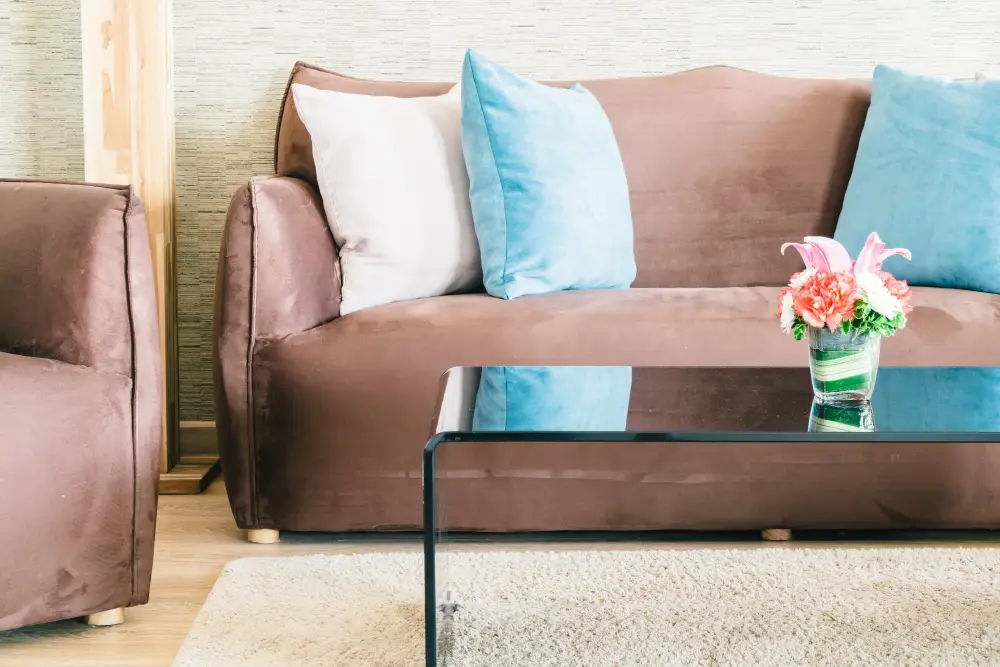
The type of fabric you choose will determine how well your cover fits and how long it lasts. Here are some common materials used for couch covers:
1. Cotton: This natural fiber is soft, breathable, and easy to clean.
2. Polyester: A synthetic material that’s durable and resistant to wrinkles.
3. Microfiber: Made from tightly woven fibers that resist stains and spills.
4. Leatherette or Faux Leather: An affordable alternative to genuine leather with a similar look but easier maintenance.
5. Stretch Fabric: These covers are made from stretchy materials like spandex or elastane which can fit snugly over any shape of furniture.
Installation Tips for Couch Covers
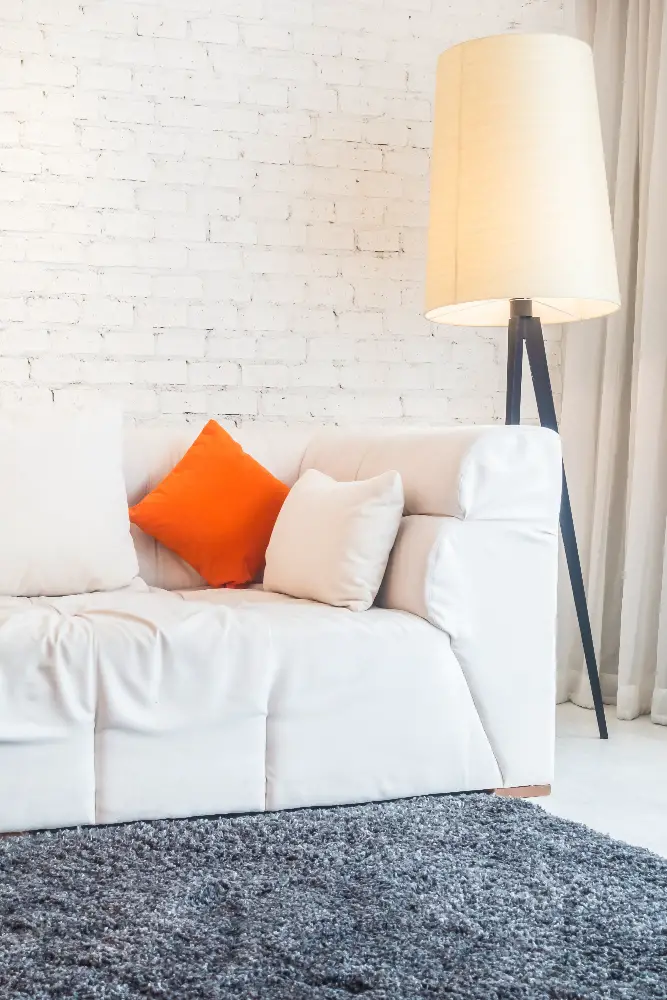
While some covers may be easier to put on than others, there are a few tips that can make the process smoother and more efficient.
Firstly, start by removing any extra cushions or pillows from your couch. This will give you a clear view of where the cover needs to go and prevent any unnecessary wrinkles or bulges.
Next, carefully drape the cover over your couch starting at one end and working your way across. Make sure that all corners are aligned properly before moving onto securing each section in place.
If your cover comes with straps or ties for added security, use them as directed by looping them around various parts of the furniture such as armrests or legs. If not provided with straps/ties then tuck excess fabric into crevices between cushions/arms etc., this will help keep everything in place while also giving a neat appearance overall!
Troubleshooting Common Fit Issues
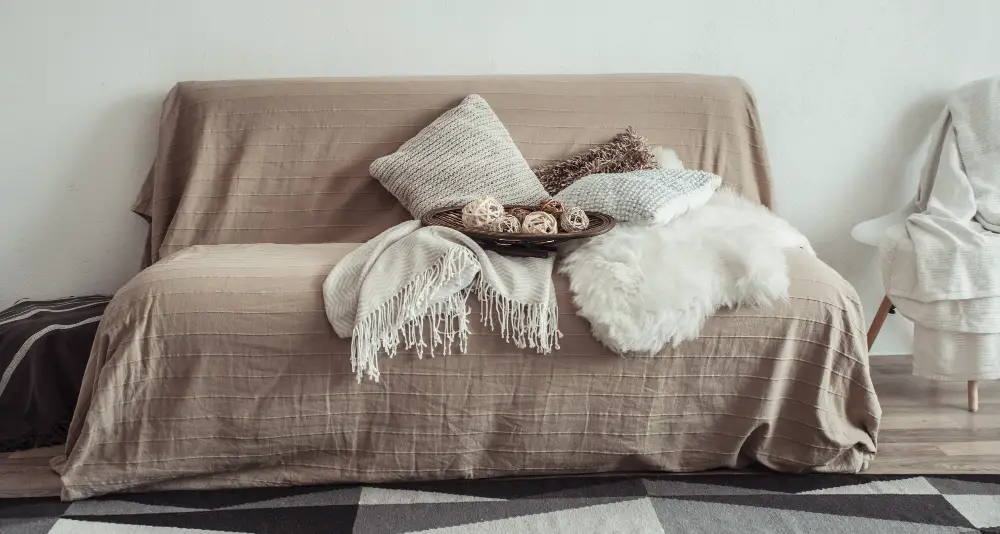
Don’t worry; it’s not uncommon to experience these problems. Here are some common fit issues that you might face and how to troubleshoot them:
1. The cover is too loose: If the cover is too big for your couch, it will look sloppy and untidy.
To fix this issue, try tucking in any excess fabric or using foam inserts to fill out any gaps.
2. The cover is too tight: A tight-fitting cover can be difficult to put on and take off, causing unnecessary wear and tear on both the couch and the cover itself.
In this case, consider purchasing a stretchy material or opting for a custom-fit option.
3. The armrests don’t fit properly: Armrests can be tricky when it comes to finding a well-fitted sofa slipcover because they come in different shapes/sizes depending on their design style (rounded vs square). Measure each armrest separately before buying covers so that they match up with what’s available online/offline stores!
Caring for Your Couch Cover

Regular maintenance will help keep your cover looking great for years to come. Most covers can be machine washed or spot cleaned with a damp cloth and mild detergent.
Be sure to follow the manufacturer’s instructions carefully.
If your couch cover is made from delicate fabric such as silk or velvet, consider having it professionally cleaned instead of attempting to clean it yourself.
To prevent damage from pets’ claws or sharp objects, discourage them from jumping on the furniture while wearing their nails down regularly.
Lastly, if you notice any tears in your couch cover after extended use, don’t panic! Many covers come with repair kits that allow you to patch up small holes quickly and easily without replacing the entire piece.
Styling Options for Couch Covers
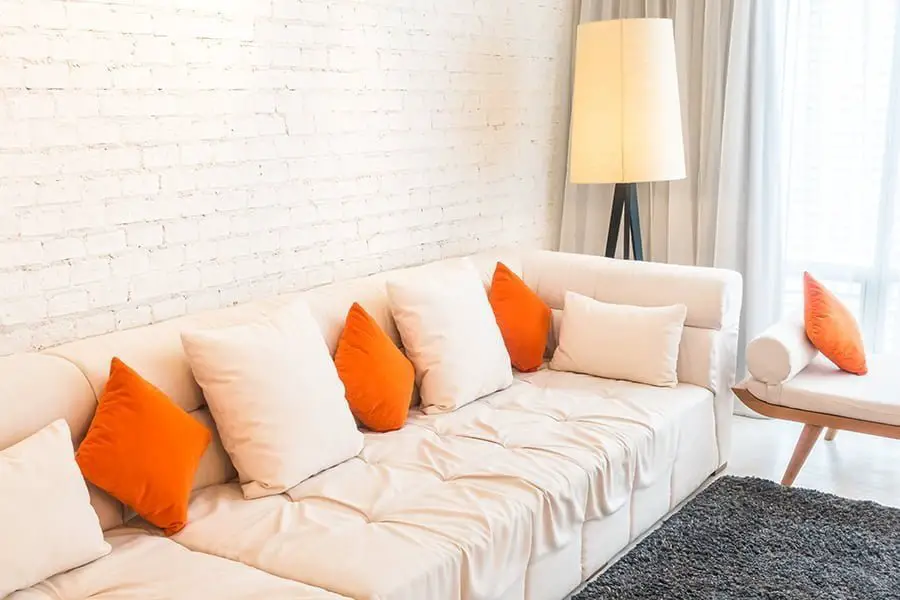
One option is to choose a color or pattern that complements the rest of your decor. If you have neutral walls and floors, consider a bold print or bright color for your couch cover.
On the other hand, if you have colorful accents throughout the room, opt for a more subdued tone.
Another way to style your couch with its new cover is by adding throw pillows and blankets in coordinating colors or patterns. This will not only add comfort but also create an inviting atmosphere in any space.
Don’t forget about texture! A plush faux fur blanket draped over one armrest can add warmth and coziness while contrasting nicely with smooth cotton covers on cushions.
FAQ
How do you measure a couch size?
To measure a couch size, measure the width (D) and diagonal depth (E) by using a straight edge from the highest point of the back frame to the front of the arm, and then from the bottom back corner up to the point that bisects the straight edge.
How do you measure a 3 seater couch?
To measure a 3-seater couch, you should measure its width in the seating area (approximately 90 inches), depth (around 38 inches), and height (about 34 inches), while keeping in mind that these measurements may vary depending on the brand.
What do you use to measure a sofa?
To measure a sofa, use a tape measure to determine its width, depth, and height dimensions, and mark them on the floor or any potential obstructions behind it using tape or newspaper.
What are the key dimensions to consider when measuring a sectional sofa for a cover?
The key dimensions to consider when measuring a sectional sofa for a cover are the length, width, height, and seat depth.
How do you determine the right size of a cover for a couch with non-removable cushions?
To determine the right size of a cover for a couch with non-removable cushions, measure the length, width, and height of the couch, including the cushions, and use those dimensions to select the appropriate cover size.
Are there specific techniques for measuring a sleeper sofa for a cover?
To measure a sleeper sofa for a cover, use a tape measure to determine the length, width, and height while it’s closed, considering any unique features such as armrests and cushions.
